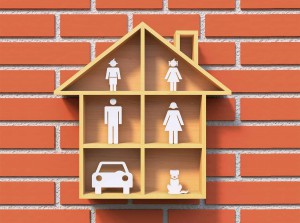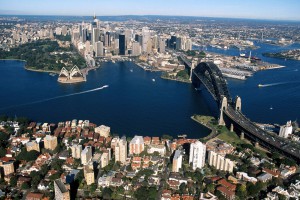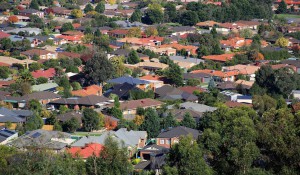In his column in Switzer, John McGrath discusses why a large portion of Aussies are staying their home longer.
Here’s what he had to say:
Australian home owners are staying put longer, with the average number of years that capital city residents hold their homes trending up since 2005 from 6.7 years to 10.7 years for houses and 5.9 years to 9 years for apartments.
The number of sales transactions has also declined in line with this trend, according to CoreLogic*.
So why are we staying put longer?
Essentially, it boils down to financial reasons and changes in the way we live today.
As discussed in our 2017 McGrath Report, affordability and the costs of buying and selling are major factors.
Stamp duty and agents’ fees alone currently run to about $55,000 on a median priced house in Sydney today.
Renovating is also on the rise, which tends to happen at the end of a boom when affordability falls.
Instead of trading up, owners draw on new equity to renovate and extend rather than move house.
It’s therefore not surprising that Melbourne and Sydney are our renovating hot spots right now, as the following list shows.
Renovation Spending
- Melbourne: $1.882 billion
- Sydney: $1.684 billion
- Brisbane: $766 million
- Perth: $500 million
- Adelaide: $299 million
- Canberra: $111 million
- Darwin: $57 million
- Hobart: $57 million
Source: Australian Bureau of Statistics data modelled by Domain Group Chief Economist Andrew Wilson, domain.com.au, published February 27, 2016
A strong economy is also encouraging people to stay put.
Despite the GFC, it’s been 25 years since our last recession, so the biggest economic factors that prompt people to sell – unemployment and financial stress, are less at play.
People in secure jobs can stay put until personal circumstances demand a change of address.
Which brings us to the second major element affecting hold periods – changes in the way we live.
There has always been a strong correlation between people’s life stages and their housing needs.
However, in today’s modern world, traditional trends in the way we live are shifting and this is reducing the necessity to move.
Couple-only households and people who live alone are the fastest growing types of households in Australia today, and they don’t need to move as much as growing families.
Recent Australian Bureau of Statistics (ABS) figures^ show 46% of couple-only and lone person households have lived in their current home for 10 or more years, compared to 28% of families with kids.
Young people are staying home longer, prompting many parents to delay downsizing or a seachange.
When they buy their first home or rent with friends or a partner, they can stay there longer because they are delaying marriage and kids until much later in life.
Traditionally, as people’s incomes grew, they would look to upgrade to a better property.
Today, wage growth is not nearly keeping pace with property prices, so there are plenty of couples staying put in apartments or small houses until their first or second child comes along.
The average family size is also getting smaller, with a steady decline from 3-4 kids in the 1960s to 1-2 kids today#.
This means many families can stay put longer in properties with fewer bedrooms.
We’re also seeing a rise in multi-generational households with couples and in-laws pooling funds to buy a large home that will suit them for the long term. ABS data^ shows the majority of multi-family households stay put for 10-20 years or more.
Our ageing population is also contributing to longer hold periods.
Mortgage-free home ownership is highest among older Australians and they prefer to stay put long term if they can, with 47% of owners^ without a mortgage living in their homes for more than 20 years.
Staying put means avoiding moving costs and preserving pension arrangements, which can change after selling.
The GFC also prompted many empty-nesters to delay retirement and stay put while they continued working to replenish lost superannuation.
Buying and holding is the key to success in Australian real estate.
Although owner-occupiers are primarily motivated by lifestyle factors, it’s important to remember that your home is your greatest financial asset and the best capital growth always occurs over the long term.
* Property Pulse, CoreLogic, published March 30, 2015
^ Housing Mobility and Conditions 2013–14, Australian Bureau of Statistics, published December 10, 2015
# Births, Australia 2014, Australian Bureau of Statistics, published October 29, 2015
East Coast Capitals with the Longest Hold Periods
HOUSES
NSW
Dawes Point: 29.7 years
Regentville: 22.6 years
Ellis Lane: 22.2 years
Vineyard: 22.0 years
Maraylya: 20.9 years
QLD
Pinjarra Hills: 16.4 years
Rochedale: 15.7 years
Macgregor: 15.3 years
St Lucia: 14.6 years
Nathan: 14.5 years
VIC
Cranbourne South: 22.2 years
Belgrave South: 18.2 years
Vermont South: 18.2 years
Noble Park North: 17.7 years
Warrandyte: 17.4 years
ACT
Bonython: 14.7 years
Gowrie: 14.4 years
Hawker: 13.2 years
Chapman: 13.2 years
Palmerston: 13.1 years
APARTMENTS
NSW
Bella Vista: 14.9 years
Haberfield: 14.1 years
Russell Lea: 13.1 years
Drummoyne: 13.1 years
Schofields: 13.0 years
QLD
Grange: 11.8 years
Kenmore: 11.3 years
Sunnybank: 11.3 years
St Lucia: 11.2 years
Macgregor: 11.2 years
VIC
Braeside: 17.5 years
Wheelers Hill: 15.9 years
Ivanhoe East: 15.7 years
Hadfield: 15.3 years
Viewbank: 14.9 years
ACT
Reid: 14.3 years
Monash: 14.2 years
Holt: 13.9 years
Higgins: 13.5 years
Greenway: 12.9 years
Source: CoreLogic; 12 months to June 30, 2016






No comments:
Post a Comment